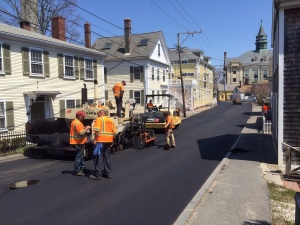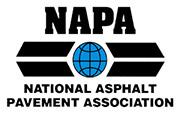Cape Cod: What Is Your Pavement Telling You? | Asphalt Paving
Cape Cod: What Is Your Pavement Telling You? | Asphalt Paving
 Asphalt paving offers a number of visual clues that can tell you a great deal about its health. Obvious signs of deterioration are usually difficult to miss, but there are also signs that indicate pavement distress — the stage in the pavement’s life prior to failure. If distress is detected early and remedied, corrective action can be taken before the pavement fails completely, minimizing the inconvenience to your customers and employees while typically saving you money as well. Here are the most common symptoms of asphalt pavement distress.
Asphalt paving offers a number of visual clues that can tell you a great deal about its health. Obvious signs of deterioration are usually difficult to miss, but there are also signs that indicate pavement distress — the stage in the pavement’s life prior to failure. If distress is detected early and remedied, corrective action can be taken before the pavement fails completely, minimizing the inconvenience to your customers and employees while typically saving you money as well. Here are the most common symptoms of asphalt pavement distress.
Cape Cod: What Is Your Pavement Telling You?
1. Mud or water on top of the pavement that has been pushed to the surface by traffic indicates that water has reached the foundation. (Cracks and potholes are the most common cause of water penetration. ) Once water reaches the foundation, its erosive action will weaken the foundation. When the foundation is no longer capable of supporting the pavement, the pavement will collapse. Potholes or excessive cracking can occur, requiring repair of the foundation to prevent cracks or potholes from quickly returning after they are repaired.
2. Alligator cracking is a term used to describe a specific cracking pattern of interconnected small cracks that resemble the scales on an alligator’s skin. Alligatored asphalt can be caused by water penetration that has weakened the foundation, or it could indicate inadequate compaction or a layer of asphalt that is not thick enough to support the weight of traffic.
3. Pavement that is torn or wrinkled signifies a failure of the bond between the pavement and the foundation. If these two surfaces are not bonded together, they can attempt to “move” independently. Most bond failures happen during the pavement’s first year of life. A structural fault can cause bond failure, but various installation errors can also be the culprit.
4. Rutting is a condition in which there are ruts or waves in the pavement’s wheel paths that run in the same direction as traffic. These ruts can be present a driving hazard as hydroplaning can occur from water collected in the low points. They can also cause a vehicle to be jarred suddenly from its path of travel. Rutting indicates that the installation and/or design of the pavement was not sufficient for the traffic load.
5. Another type of pavement waves are referred to as wash boarding, corrugation or shoving. This stress pattern is normally found where vehicles are braking and accelerating frequently, such as at traffic signals. Corrugation is an indication that an error occurred when the asphalt was mixed. If the aggregate was insufficient, too much asphalt cement was added or the wrong type of asphalt cement was used, corrugation can occur.
6. Spots in the wheel paths that are unusually smooth or shiny (called flushing) indicate that the asphalt mix contained an excessive amount of asphalt cement. As too much asphalt cement can also cause corrugation, it is not uncommon for pavement that shows flushing to also show corrugation.
Techniques for correcting asphalt distress depend on the extent and type of the damage. Two commonly used techniques are overlays and “cut and patch” methods. An overlay is the application of an additional layer of asphalt over existing pavement to provide additional support. The “cut and patch” technique requires cutting away damaged pavement, making any spot repairs to the foundation and then applying new asphalt to the area.
If your pavement is in distress, Dirtworks can help. We are an excavation and asphalt paving company providing services throughout the Cape Cod area. We have more than 20 years of experience and offer a complete line of asphalt-related services, driveway paving, commercial paving, sealcoating, repairs, line striping and new installation. Use our online form to request your free estimate, or call us at (508) 240-5541.






